Content:
Those wishing to give their garden plot some element of exoticism are strongly recommended to pay special attention to such a plant as actinidium arguta issai (Latin actinidium arguta issai). This culture belongs to vines and grows in wildlife mainly in Asia: China, Japan, Nepal.
Domestic breeders managed to develop varieties that are distinguished by frost resistance, thanks to which they feel great in the harsh Russian conditions.
Features of the view
Actinidia Issai is a perennial vine that, with proper support, can grow to almost any height. It is planted not only for decorative purposes, the fruits of the plant have healing properties.
If you describe the fruit crop thesis, the following significant points should be highlighted:
- The plant is dioecious, climbing, has woody branches;
- Actinidia is a self-pollinating plant (hermaphrodite), which, unlike other varieties of culture, does not require the presence of female and male shoots. The pollinator for the plant is wind or insects. What is noteworthy, the plant can self-pollinate even at long distances - up to half a kilometer;
- Actindia flowers can be yellow, orange, white, in some varieties they have the shape of an asterisk. The aroma is intense, sharp, one might even say pungent, but not too spicy, but rather pleasant;
- Fruits appear in September - they are characterized by small seeds, sweet and sour taste and intense pineapple aroma;
- The shrub is often used for vertical landscaping.
Actinidia Argut Issay (like its varieties, like Jumbo and Geneva) can bear fruit for thirty years. Shoots are brownish-green in color, with light pubescence in the form of reddish-brown hairs. The foliage is leathery and velvety. In one place, without requiring a transplant, the plant can grow safely up to 70 years. At the same time, the quality of the crop does not suffer over time.
Planting a plant
Gardeners have not agreed on when to plant actinidia.
Several options are practiced:
- in early spring, before the juices begin to move;
- in early summer, at the end of flowering;
- in the fall, a couple of weeks before the first frost.
The described culture is quite demanding on the composition of the soil - it must be slightly acidic or acidic. In no case should a fruit and berry crop be planted on clay soil, characterized by a high level of groundwater - the plant simply will not survive in such conditions. In order for the plant to grow better, it is additionally recommended to arrange drainage.
Plant propagation
Isaiah actinidia can be propagated by layering, seeds or cuttings. The vegetative method allows you to get fruits on average in the third or fourth year after planting. The use of seeds assumes a longer period - the first berries will appear only seven years after planting.
Propagation by cuttings
Cutting a plant is the easiest and fastest way to grow a fruiting crop. The procedure is performed in June.To obtain cuttings, several healthy, strong branches are cut, the length of which is more than one meter. They are divided into small pieces (about 15 cm). A prerequisite is that each of the segments must have at least two internodes.
For the winter period, the cuttings should be covered with spruce branches or foliage fallen from trees. At the onset of spring, the plant can be transplanted into open ground.
Reproduction by layering
The cultivation of a plant such as actinidia acute Issay is possible through layering.
At the end of the spring sap flow, when fresh leaves appear, the most powerful shoot should be chosen and pinned to the soil with the top down. The attachment point must be covered with soil, as well as sawdust.
Seed propagation
Propagation by seeds of Isai actinidia according to the description of the variety, although allowed, is not practiced too actively. Indeed, in this case, it will take too long before the moment when the bisexual holly variety can bear fruit.
If the need to grow a plant from seeds for a specific reason arises, actions should be built in accordance with the following algorithm:
- In December, the seeds are soaked for several days;
- Placed in a nylon stocking and placed in a box filled with sand;
- Sand and seed packaging are moistened daily;
- With the onset of January, the sand box is moved to the refrigerator;
- In March, the location of the seeds is changed again - they are transferred to a room with a temperature of 10 to 23 degrees. Seed moistening does not stop;
- After pecking, the seeds are transplanted into containers to a depth of just under 2 cm;
- The plant is sprayed and carefully protected from the negative effects of direct sunlight;
- After the appearance of several leaves, they are planted in a greenhouse.
If the cultivated actinidia variety is self-pollinated, sex determination of the seedling is not a priority. The plant is hermaphrodite, and self-pollination occurs without the need for heterosexual specimens.
In general, the sex of the plant can be determined only after 3-5 years from the moment of planting, when the seedlings grown from seeds first begin to bloom. It is then that they are transplanted to a permanent place of growth.
Support
The first support of Issai actinidia is needed from the moment of planting and caring for the plant in about a month. It is at this time that the first pegs are installed. A serious emphasis, for example, a trellis, will be required only after a year.
The trellis structure can be used the most elementary: two pillars and several rows of wire.
Many people cover frameworks in the form of some kind of figure with actinidia. At the same time, the actinidia covers the entire structure, and a very unusual creature or form appears on the site. Actinidia are often used for landscaping arched structures.
Watering and loosening
Actinidia Arguta is not a very moisture-loving plant. The plant should be watered only in severe drought. Alternatively, if there is no rain for more than three days, and there is a strong heat, one bucket per bush will be more than enough.
Harvesting
If the plant is provided with decent care, actinidia begins to produce crops from the age of three. But if the liana is missing something, the beginning of fruiting may be delayed by a year. Of course, at first there will be no talk of a record number of berries. But over time, fetal volumes will begin to increase, reaching their peak by about seven years of age. So that the number of berries does not decrease in the future, actinidia will require periodic rejuvenating pruning. If everything is done correctly, the plant will bear fruit without problems for more than one decade.
Productivity on good soil with decent care from one bush is 6-10 kg of berries. Fruit ripening is uneven. As a rule, the full collection of berries is carried out in at least five passes.
It is strongly discouraged to rush to pick berries. This will allow you to harvest the fruit in fewer times. But it is not worth delaying this process too much. Otherwise, the berries will simply crumble.
After the harvest is fully harvested, it is very important not to forget to feed the plant and prepare it for the winter period.
Shelter for the winter
In central Russia, actinidia does not require mandatory shelter for the winter. But for the winter it should be covered with a ten-centimeter layer of sawdust in the root zone. They need to be removed in early spring. The liana is usually not removed from the trellises.
If the shrub is grown in a rather harsh climate, it is removed from its supports and laid on the ground, being careful not to damage the shoots. Then all the vines are carefully covered with spruce branches or dry foliage. Alternatively, you can use a special covering material. The insulation is removed after the positive temperature is established.
Advantages and disadvantages of the variety
Summarizing the above, the following advantages of the variety can be especially highlighted:
- unpretentiousness and ease of care;
- the ability to use in landscape design;
- excellent fruit taste;
- high content of vitamins and microelements in berries.
There are very few disadvantages. The plant does not tolerate both excess moisture and drought, does not like drafts and direct sunlight. For the winter in most regions of the country, actinidia needs to be insulated.
Actinidia does not currently top the top of the most popular plants. But if you decide to plant it, the plant will not cause any special problems, but it will become a real decoration of the garden plot.



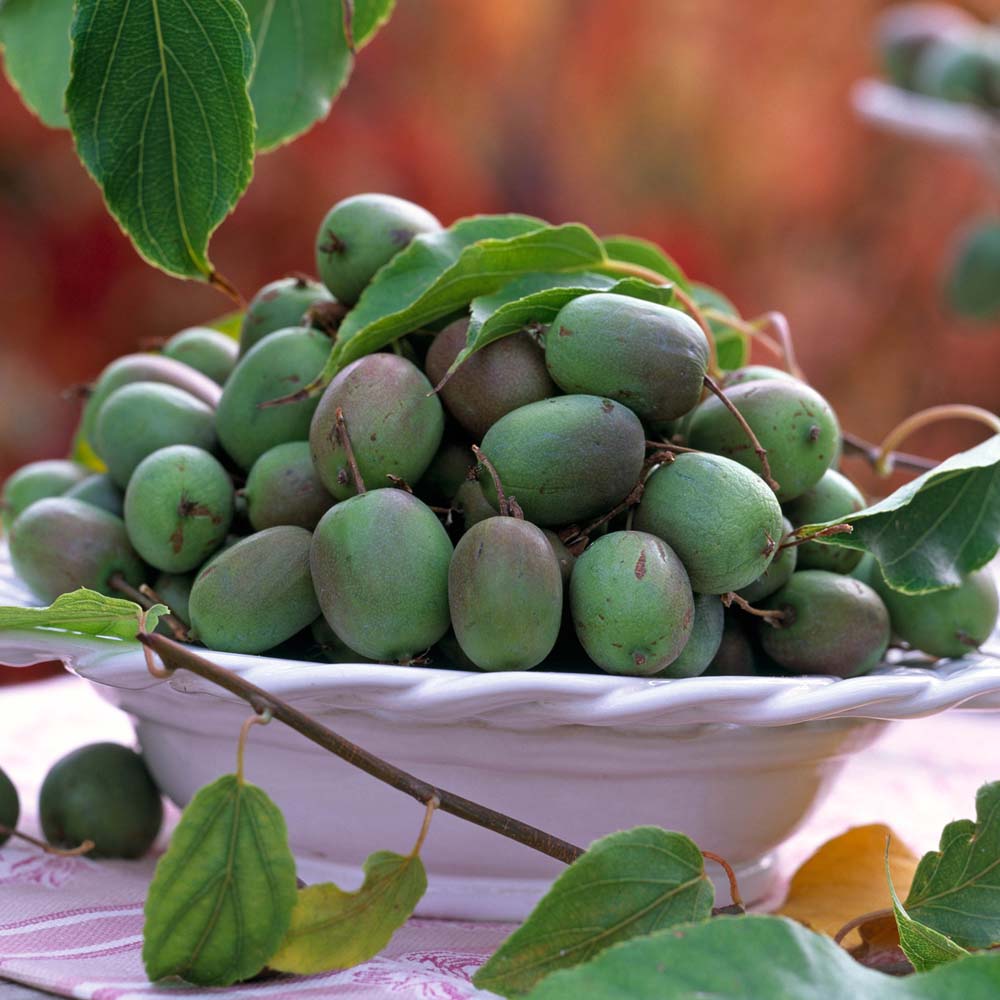
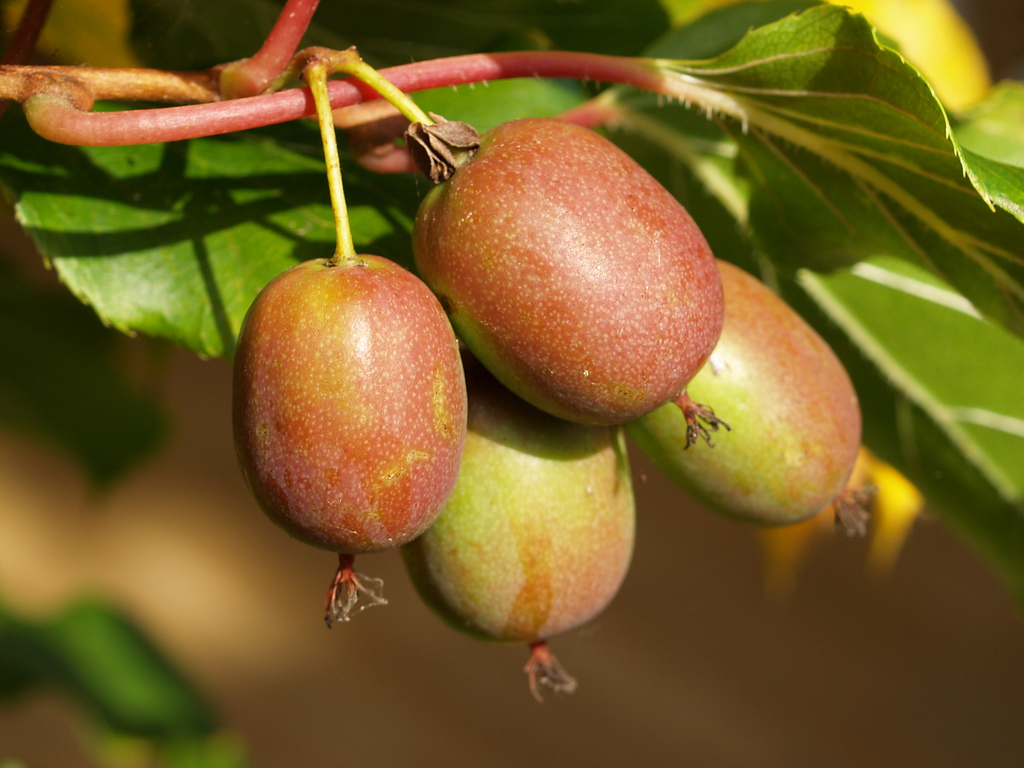
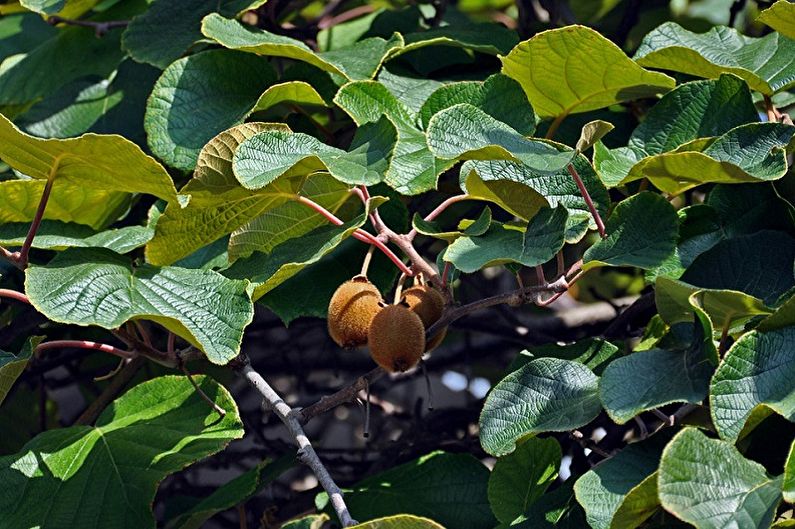
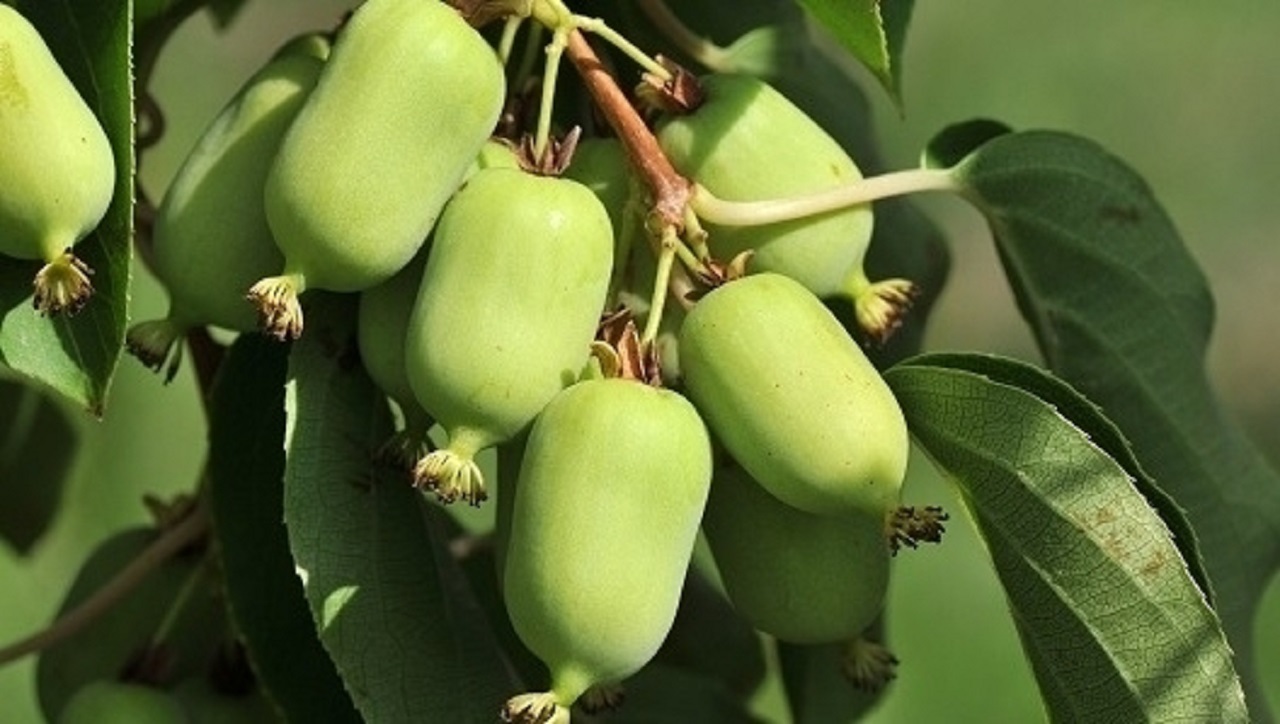
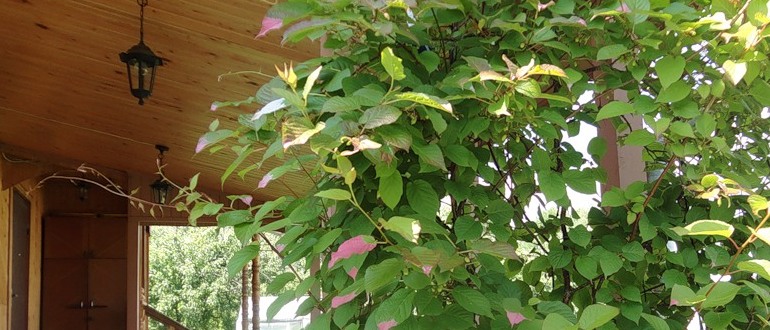
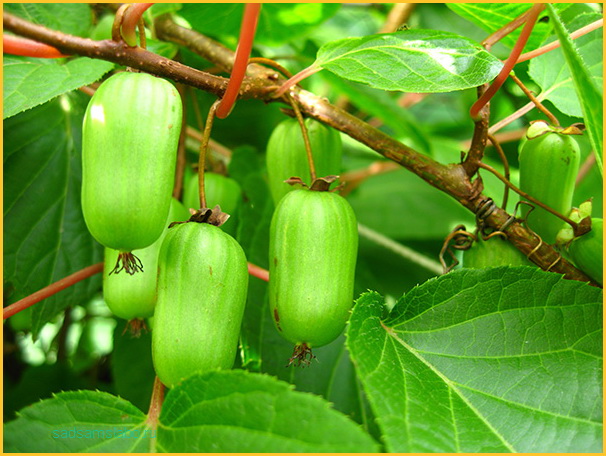
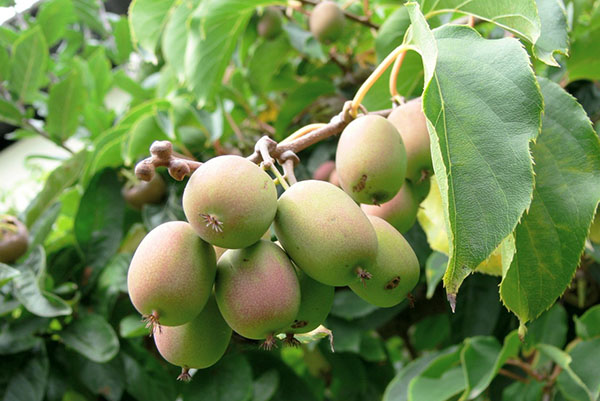







“It is not recommended to neglect soil loosening in the most urgent way. "
I disagree with this advice! And loves water "from the belly" + showers, and loosening of the root zone is contraindicated, because superficial root system